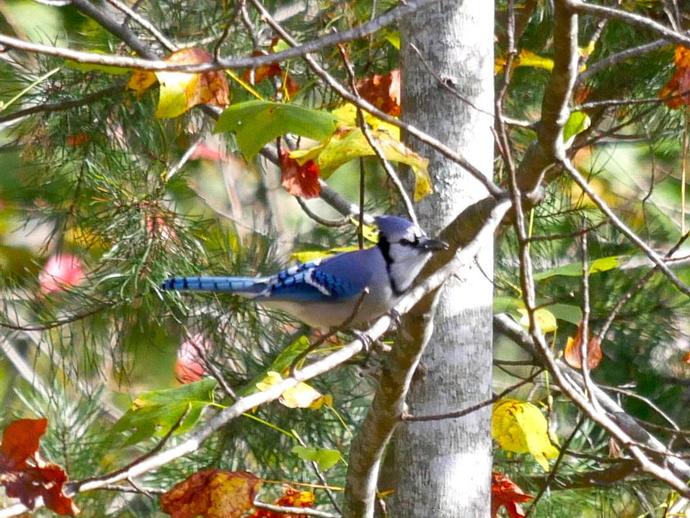October 21, 2020
Ben here with Wednesday's #BenInNature update! For such beautiful birds, blue jays (Cyanocitta cristata) are fairly polarizing, mainly because they're loud and can be aggressive at the feeder, often scaring away other birds. They're also quite territorial, and in some cases, they will even raid the nests of other birds to eat the eggs. However, they also offer benefits to other birds. Blue jays are bold enough to chase off predatory birds such as hawks, and if they see a hawk flying overhead, blue jays will often sound an alarm call. Smaller birds seem to recognize this alarm call and will hide themselves accordingly. You can consider the blue jay the air raid siren of the animal kingdom!
Blue jays belong to the family Corvidae, which also includes crows and ravens. Much like their relatives, blue jays are incredibly smart (by bird standards, anyway). In a 1973 study, captive blue jays were observed using strips of newspaper as tools to obtain food! They also utilize a variety of calls for different purposes, and like other members of the corvid family, they can be taught to mimic human speech.
Blue jays can be found year-round throughout eastern North America. They eat a huge variety of food, including seeds, nuts, fruit, invertebrates, food scraps, and occasionally eggs. They will even sometimes cache their food for later, much the same way that squirrels do!
ABOUT #BenInNature
Social distancing can be difficult, but it presents a great opportunity to become reacquainted with nature. In this series of posts, Administrator of Science Ben Williams ventures outdoors to record a snapshot of the unique sights that can be found in the natural world. New updates are posted Monday - Friday, with previous posts highlighted on the weekends.
NATURE PHOTO IDENTIFICATIONS
If you discover something in nature that you would like help identifying, be sure to message us right here on Facebook with a picture (please include location and date of picture) and we'll have our experts help you identify it!

 Hours & Admissions
Hours & Admissions Directions
Directions

